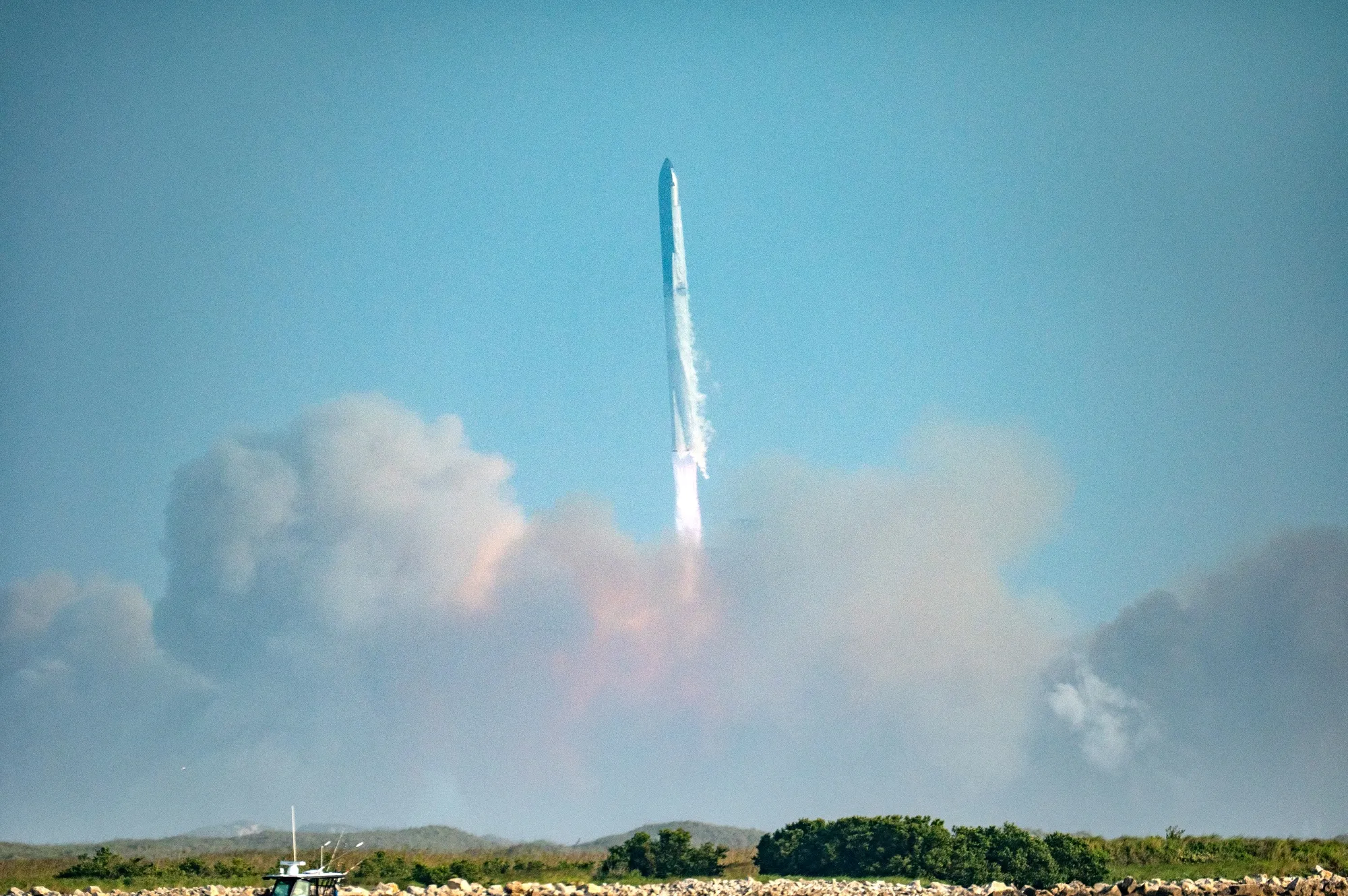Starship Flight 10: SpaceX’s Next Launch After Setbacks
SpaceX Starship rocket is poised to soar again — on August 24, 2025, SpaceX’s gargantuan Starship rocket will attempt its 10th flight test, marking another bold step forward following a string of high-profile setbacks. Fans and critics alike are watching closely, anticipating both triumphs and valuable data from this mission.
Since early 2025, the Starship program has faced multiple challenges. Flight 7 ended abruptly in January due to a cascading failure in the fuel and engine system that led to the ship’s disintegration mid-air. Three months later, Flight 8 suffered a hardware failure in a central Raptor engine, again terminating flight prematurely. Flight 9 in May was more successful in launch, but the upper stage lost attitude control during coast, resulting in mission failure. Compounding the pressure, a June static-fire test of the Flight 10 vehicle ended with a catastrophic explosion. Despite these hurdles, SpaceX has persisted in resolving issues and pushing ahead to meet its long-term goals of lunar and Martian missions.
Understanding What’s at Stake for the Upcoming Launch
This flight test is not just another attempt—it’s critical for validating SpaceX’s iterative “test-to-failure” approach and proving progress toward reusability milestones. The Super Heavy booster, redesigned with enhanced thrust and sturdier reentry flaps, will attempt a controlled splashdown in the Gulf of Mexico, while the Starship upper stage aims for a splashdown in the Indian Ocean. As with previous flights, SpaceX will attempt to deploy eight Starlink satellite simulators and monitor the vehicle’s heat shield and structural performance under stress.
The outcome could be pivotal for SpaceX’s credibility. Success would reaffirm the company’s development model and bring it closer to delivering on NASA’s 2027 lunar mission using Starship—as well as Elon Musk’s plans for an uncrewed Martian voyage by late 2026. Conversely, failure might raise fresh doubts about the program’s robustness amid escalating technical, environmental, and regulatory challenges.
The Technical Leap: Upgrades and Key Enhancements
SpaceX has incorporated several upgrades into this particular vehicle. Engineers strengthened the heat shield to better withstand reentry, improved thrust margins, and enhanced steering flap control—all critical for sustaining high-stress returns from orbit-like trajectories. These improvements are the result of analyzing failures from Flights 7, 8, and 9, which highlighted recurring issues with upper-stage stability, engine reliability, and fuel-system integrity.
The team aims for the Super Heavy booster to perform a “soft” landing in water instead of attempting the more challenging tower catch—though that remains a longer-term goal. Meanwhile, the Starship stage will endure reentry tests and attempt Starlink simulator deployment. These maneuvers are integral to validating reusability performance and functional payload delivery—all essentials to eventual commercial and exploration operations.
Regulatory Green Light and External Pressure
The FAA cleared SpaceX to proceed with Flight 10 after accepting corrective action stemming from earlier incidents. Investigations into Flight 9’s upper-stage loss were concluded, and despite the static test explosion in June, authorities deemed it safe to return to flight as early as late August.
That said, environmental concerns loom—especially related to debris fallout. A June-ground test explosion scattered debris across the border in Mexico, prompting protests and legal threats. Environmental advocacy groups have raised alarms about the potential impact, complicating operations at the Starbase site.
Watching the Launch: How to Tune In
SpaceX will stream the launch live starting 30 minutes before liftoff via its X platform (formerly Twitter) and its website, allowing global viewing access. In South Texas, locations like Isla Blanca County Park are expected to attract eager crowds hoping to catch the spectacle in person.
Observers should expect significant noise from the ignition of all 33 Raptor engines. Elon Musk has said he’ll provide a live post-launch update. Given the mission’s complexity, expect updates and analysis from space-focused outlets to quickly follow across YouTube and news platforms.
What Experts Are Saying—and What to Watch
Experts like MIT’s Olivier de Weck caution that repeated upper-stage failures raise “serious questions whether the architecture of Starship is in fact feasible or not.” While the booster is seen as relatively reliable, the upper-stage remains suspect due to repeated engine and fuel system anomalies.
Still, SpaceX’s bold “fail fast, learn fast” philosophy continues to drive progress. NASA’s Artemis 3 mission is banking on Starship’s maturation, and observers point to Musk’s optimism about orbital refueling as the next frontier. If Flight 10 is successful, it may restore much of the program’s momentum and support deeper, bolder exploration ambitions.
The Road Ahead: From Rio Grande to the Red Planet
A successful Flight 10 will buoy SpaceX’s roadmap: an uncrewed Mars mission by end-of-2026, followed by crewed operations, contingent on overcoming in-orbit refueling challenges. NASA’s 2027 lunar mission also hangs on Starship’s reliability and reusability data. Wall Street Journal
Failure, however, could stall timelines and trigger more stringent regulatory scrutiny. Environmental backlash from Mexico, NASA’s dependencies, investor expectations, and public confidence all ride on this mission. The results will not just shape exploration—it’ll determine whether Starship remains on pace for humanity’s return to the Moon and beyond.
Conclusion
As SpaceX embarks on Flight 10 of the Starship campaign, the stakes could not be higher. Success could vindicate the “test-to-failure” strategy, accelerate lunar and Mars mission plans, and restore confidence in the upper-stage design. Yet the path remains fraught with technical complexity, environmental scrutiny, and regulatory risk. No matter the outcome, this mission will shape the future of commercial spaceflight in 2025 and beyond.
Subscribe to trusted news sites like USnewsSphere.com for continuous updates.





